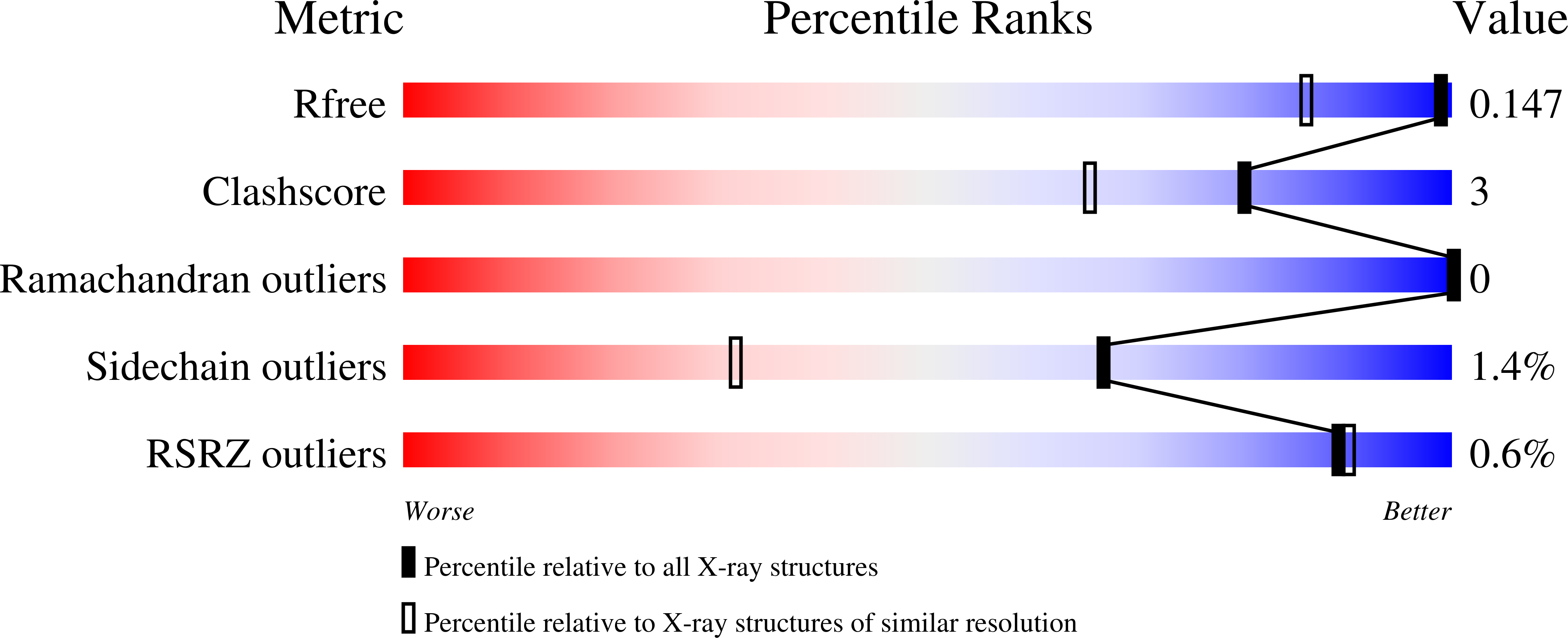A bound reaction intermediate sheds light on the mechanism of nitrogenase.
Sippel, D., Rohde, M., Netzer, J., Trncik, C., Gies, J., Grunau, K., Djurdjevic, I., Decamps, L., Andrade, S.L.A., Einsle, O.(2018) Science 359: 1484-1489
- PubMed: 29599235
- DOI: https://doi.org/10.1126/science.aar2765
- Primary Citation of Related Structures:
6FEA - PubMed Abstract:
Reduction of N 2 by nitrogenases occurs at an organometallic iron cofactor that commonly also contains either molybdenum or vanadium. The well-characterized resting state of the cofactor does not bind substrate, so its mode of action remains enigmatic. Carbon monoxide was recently found to replace a bridging sulfide, but the mechanistic relevance was unclear. Here we report the structural analysis of vanadium nitrogenase with a bound intermediate, interpreted as a μ 2 -bridging, protonated nitrogen that implies the site and mode of substrate binding to the cofactor. Binding results in a flip of amino acid glutamine 176, which hydrogen-bonds the ligand and creates a holding position for the displaced sulfide. The intermediate likely represents state E 6 or E 7 of the Thorneley-Lowe model and provides clues to the remainder of the catalytic cycle.
Organizational Affiliation:
Institut für Biochemie, Albert-Ludwigs-Universität Freiburg, Albertstraße 21, 79104 Freiburg, Germany.























